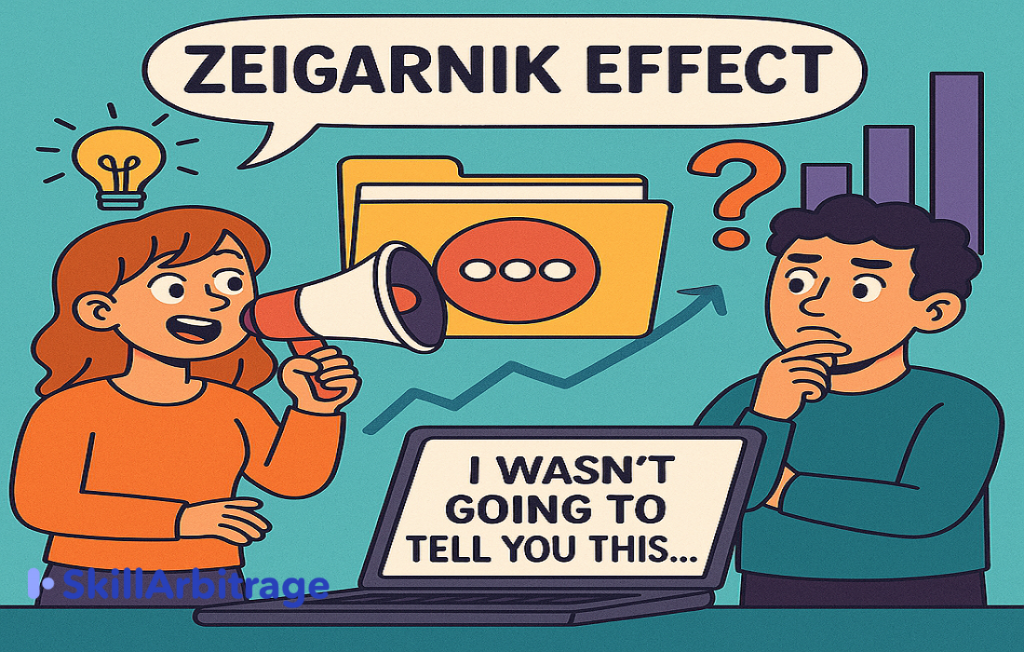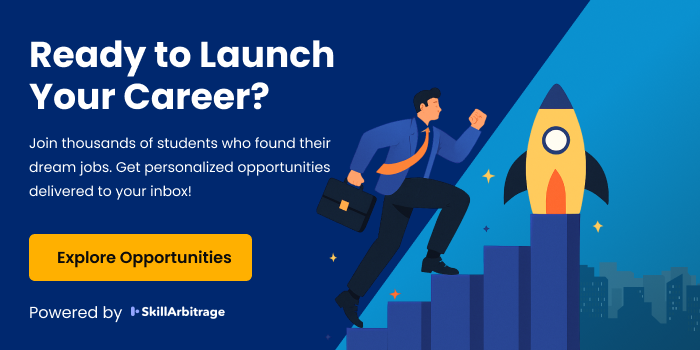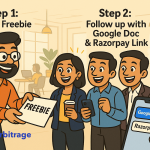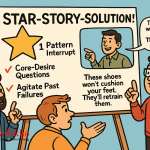This article explores the Zeigarnik Effect in detail from the marketing perspective and provides how-to tips on its usage across various media. It would be very useful for content writers and strategists eager to use this remarkable effect in their content strategies.
Table of Contents
Introduction: the power of unfinished business
It was a hot Sunday afternoon in May when I realized I had an earworm.
I had a tune stuck in my head. I kept humming it, but the words just wouldn’t come to me.
I kept at it for hours, and it was very annoying.
That’s when it struck me, this was the Zeigarnik Effect in action!
Have you ever been stuck thinking about a movie you didn’t finish? Or a WhatsApp message you opened but didn’t reply to, and it kept nagging at you? Like the tune that got stuck in my head?
All of that is caused by something called the Zeigarnik Effect.
And it is great for driving conversions!
Psychologist Bluma Zeigarnik discovered this effect in the 1920s, sitting at a small coffee shop in Vienna and observing how waiters were more prone to forgetting finished tasks compared to unfinished ones.
Her research revealed a curious thing: people tend to remember unfinished tasks better than completed ones.
Why am I telling you about this? Why does this matter to content writers and marketers?
Because this principle, when used well, can drive clicks, opens, and conversions like few others.
Your audience doesn’t just see your content, they feel compelled to engage with it.
Let’s say you open an email that says:
“I wasn’t going to tell you this…”.
You have to click because your brain is now in a state of discomfort. Something’s unresolved, and you must have the resolution.
This is the Zeigarnik Effect used masterfully. You are not tricking your audience. You are simply designing your message in a way that aligns with how the human brain works.
Here is how effective using this lever in marketing could be.
In this blog, we’ll break down the science, show you how global brands are using it, and give you templates to implement it in your own copy.
Let’s Zeigarnik it!
How global brands use the Zeigarnik Effect
There are no case studies directly mapping the impact of the Zeigarnik Effect across brands, but its influence is evident in strategies that keep audiences hooked.
Here are three powerful examples:
1. Netflix & cliffhangers
Think of any blockbuster series on Netflix, like Stranger Things or You. Episodes often end with gripping questions:
- “Will Eleven survive?”
(Source: https://en.wikipedia.org/wiki/Stranger_Things#/media/File:Stranger_Things_logo.png)
- “Is Joe Goldberg going to get caught?”
(Source: https://wallpapersok.com/wallpapers/you-netflix-tv-shows-72ynm52qx46pzk2d.html)
These cliffhangers leverage the Zeigarnik Effect to make the “next episode” button irresistible.
This binge-watching behavior, fueled by unresolved storylines, keeps viewers glued to the platform.
You can spot the same across other platforms as well, especially in mystery, true crime, or thriller genres.
2. BuzzFeed’s viral headlines
BuzzFeed’s listicles are masters of the open loop. Headlines like:
- “She tried to kiss him. What happened next… OMG!”
- “Only 1% of people know this basic fact about India.”
These leave stories half-told, sparking curiosity that compels clicks. BuzzFeed’s strategy has driven massive engagement, with their viral content often garnering millions of views.
Their top-performing posts exploit the Zeigarnik Effect to keep readers scrolling for resolution.
3. Amazon’s cart reminders
When you abandon a purchase on Amazon, you’re likely to receive emails like:
- “Still interested in this item?”
- “You left something behind…”
These are not just reminders, they are psychological triggers.
This tactic capitalizes on the Zeigarnik Effect, pulling shoppers back to resolve the open loop of an incomplete transaction.
This is a snapshot of what we have been discussing till now.
But how do you harness this magic power?
How do you use the open loop to lead to lucrative sales?
Here are 5 different ways of doing it.
5 ways of using the Zeigarnik Effect in copywriting
Now that you’ve seen how top brands use this effect, here’s how you can apply it in your own work.
Step 1: Open strong loops
When writing a content hook, start with questions or unfinished thoughts that would compel the reader to read to find out what happens next.
Examples:
- “What if I told you there’s a way to double your freelance income in 30 days?”
- “I made a mistake that nearly ruined my career — and I’m glad I did.”
Step 2: Use headlines that don’t give it all away
When writing video or static ads, write headlines that cause curiosity, driving the audience to read the entire piece of content.
Here are examples of bad and good headlines:
Good examples:
“The Secret Trick I Used to Land a $5000 Client”
Bad examples:
“How I sent a cold Email to a client and got a $5000 deal”
The first one creates curiosity and drives engagement. The second one is flat and does not spark tension and intrigue.
Which one, do you think, has a better chance of working?
Step 3: Write email subject lines that feel unfinished
When writing emails, use a subject line that looks and feels unfinished; this will drive the audience to take action.
Examples:
- “This might be your last chance…”
- “You won’t believe what just happened.”
- “Still thinking about this?”
These lines invite the click because they start a story. The brain needs to finish it.
Step 4: Structure blogs with mid-story interruptions
Start with a story, break it midway, and promise to finish it later.
For example:
“Last year, I was about to pitch my biggest client. My hands were shaking. But what happened inside that room changed everything…”
(But before I tell you what happened, let’s talk about why freelance pitches fail.)
You have opened a loop, now the reader stays for the value, and to complete the story.
Step 5: End with callbacks
When you do return to your original story at the end and resolve the loop, it creates emotional satisfaction for the audience.
This technique increases time spent and completion rates on blogs and landing pages..
Here are some real-world usages of the same.
Real-world examples from Indian and global brands
1. SkillArbitrage’s webinars
Subject line: “Still wondering how they’re earning ₹1.5 lakhs/month from home?”
The question opens a loop. The email delivers a webinar that promises the answer. This increases CTR (click-through rate) and retention.
2. Nykaa’s abandoned cart emails
Subject: “We saved this just for you”
This reminds the customer there’s a task pending, but here’s the catch, without guilt-tripping. It boosts conversion rates much higher than a simple “Come back to the site!”.
3. UpGrad’s YouTube ads
An ad starts with:
“This man was rejected by 17 companies. Now he earns ₹24 lakhs/year. Here’s what changed…”
It opens with tension and a teaser, making the viewer stick around for the full story. Here, relatability is at play as well; the audience can identify with both the aspiration and the story.
Want to know how to do this for any brand you are working with? Here are some templates you can plug in and use.
Templates you can steal
Blog/Ad titles
- “The one mistake that killed my career (and how I came back)”
- “Most freelancers miss this simple trick — do you?”
- “You’ve been doing this wrong the whole time”
Email subject lines
- “Not sure if you saw this…”
- “You are 1 step away from unlocking something big”
- “This could change your writing career forever”
Instagram/LinkedIn starters
- “I didn’t want to talk about this publicly…”
- “This post could get me into trouble, but here goes…”
- “Everyone celebrates success. No one talks about this part.”
But these are just starting points… how do you ensure that the audience reads till the end?
Here’s how:
Advanced tips: taking it beyond basic curiosity
1. Use delayed gratification
Instead of revealing the payoff immediately, sprinkle it throughout.
“I’ll show you the 3-sentence script that got me my biggest client — but first, here’s what didn’t work…”
Build tension. Then deliver.
2. Layer multiple loops
Start one story, then interrupt it with another. Bring them both back at the end.
This multi-loop technique is used by top YouTubers, novelists, and scriptwriters to keep people glued.
3. Use visual gaps
Use line breaks or “Read More” cuts to your advantage.
Start with:
“I was earning ₹15,000/month. Then something wild happened.”
[See more…]
That visual interruption + unresolved story = more engagement.
You can make the Zeigarnik Effect even more powerful by layering it with other psychological triggers.
Here are the most effective ones.
Psychological triggers that pair well with Zeigarnik
FOMO (Fear of Missing Out)
The fear of missing out is an excellent technique as it enhances the unfinished aspect trait of the Zeigarnik Effect.
“Only 2 days left to know how top writers charge $100/hour.”
Pattern Interrupt
To do this, start with something unexpected and use the Zeigarnik Effect to create sustained interest.
“I hate content writing. There, I said it.”
Contrast
Create a before-after scenario at the start and keep the reveal for the body content.
“Before I knew this trick, I was invisible. Now I get 3 inbound leads a week.”
This will keep the reader hooked.
These psychological triggers amplify the Zeigarnik Effect by adding an emotional pull with the effect of leaving a story untold.
I have shown you how you can harness this power but another question still remains.
Should you do it because you can?
Ethics check: is it right to use this?
A lot of people believe that it is extremely manipulative to use psychological triggers in marketing. We cannot deny that marketing is a discipline based almost entirely on psychological triggers.
In my opinion, there is nothing unethical about using this particular lever if you are providing real value.
But cheap gimmicks like clickbait without closure, headlines that overpromise, and endless loops with no payoffs do not work in the long run.
Remember the tune I had stuck in my head? It was a popular chartbuster. I came across it on a reel the next day, and suddenly remembered the words!
Do you see what I did there?
Exactly! I closed the loop.
Use it to tell better stories, impart value, create tension, and give people a reason to keep reading.
Final thoughts: don’t close every loop too early
A lot of writers kill curiosity in the first two lines.
But if you know how to keep a story open, like a movie trailer that ends with, “You won’t believe what happens next” — you will win.
In a world where attention is short and competition is high, the Zeigarnik Effect is your mental magnet.
Use it well and let the clicks happen and conversions will follow.
Try one of these templates in your next email campaign and track the click-through rate. Share your results with us.
FAQs
Q1: What’s the difference between curiosity and clickbait?
Curiosity builds tension and delivers value. Clickbait builds tension and breaks trust. One strengthens your brand. The other kills it.
Q2: Can I use this on every post?
Not every post needs it. Use it when you want people to engage longer — like in blogs, videos, emails, or sales pages.
Q3: What’s a good way to practice?
Take your next Instagram post and start with a story that doesn’t end. Use a “Read more” cut. Watch your engagement rise.
Q4: Does this work for B2B content?
Absolutely. Open loops aren’t random, they’re strategic. You can say: “The one SaaS pricing tweak that increased MRR by 27% (with no extra features).”
Q5: Is this the same as AIDA (Attention, Interest, Desire, Action)?
It fits inside AIDA. The Zeigarnik Effect fuels Attention and Interest, keeping readers glued so they move to Desire and Action.







 Allow notifications
Allow notifications
